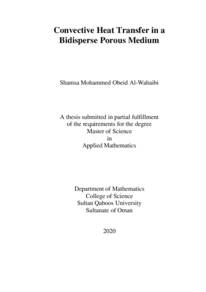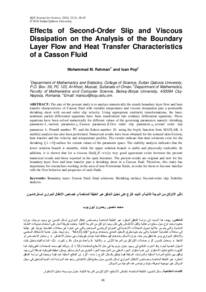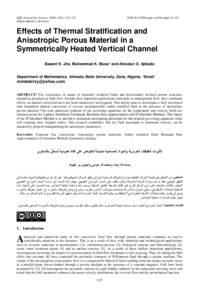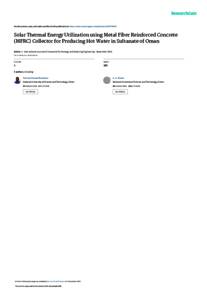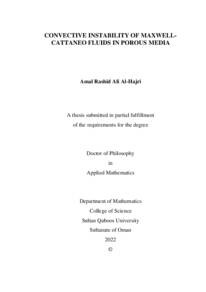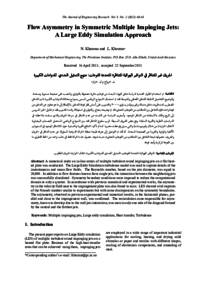Document
Convective heat transfer in a bidisperse porous medium.
Publisher
Sultan Qaboos University.
Gregorian
2020
Language
English
English abstract
The study of flow through bidisperse porous media (BDPM) has attracted
the attention of many researchers because of its potential applications in
industrial, physical, and hydrological problems. In this project, we have
studied numerically the problem of two-dimensional, incompressible,
laminar, steady flow through a BDPM over a flat semi-infinite plate along
the vertical direction with a uniform magnetic field applied normal to the
flow direction using the framework of the Boussinesq approximation. We
have studied two different models: Darcy- Boussinesq model and DarcyBrinkman-Forchheimer-Boussinesq model. In both models, we
considered two-velocity and two- temperature equations. The physical
models are governed by the linear as well as nonlinear coupled partial
differential equations which cannot be solved analytically. To follow the
numerical approach we first made the governing equations dimensionless
using a suitable transformation of variables. The simulation was carried
out using the very robust computer algebra software MATLAB.
Comparisons with previously published works were performed which
gave acceptable agreement among the results.
In both physical models, particular efforts have been focused on the
effects of the Rayleigh number, Hartmann number, modified thermal
diffusivity ratio, ratio of permeabilities, and the inter-phase momentum
transfer parameter on the flow and thermal fields. The results
iii
corresponding to the dimensionless velocity and temperature profiles are
displayed graphically for various pertinent parameters and discussed them
from the physical points of view. The role of the various model
parameters is identified to know the effects of them in the momentum and
thermal boundary layers thicknesses which will help in controlling the
physical system.
The results show that for the Darcy and non-Darcy models the velocity in
the f-phase (macrophase) increases with the increment of the Rayleigh
number and the modified thermal diffusivity ratio, while the velocity in pphase (microphase) rises with the growth of the Rayleigh number, the
ratio of permeabilities and inter-phase momentum transfer parameter. The
increment of these model parameters caused the momentum boundary
layer thickness to decline. Besides, the temperature in the f-phase
increased with the enlargement of the Hartmann number and ratio of the
permeabilities, whereas the temperature in the p-phase escalates with the
expansion of the Hartmann number, modified thermal diffusivity ratio,
and f-phase volume fraction. The thickness of the thermal boundary layer
evolved with the increase of these model parameters.
In the Darcy-Brinkman-Forchheimer-Boussinesq model which is valid
for the high velocity due to the high permeability, particular efforts have
been given on the inertial parameters too. The result shows that for lower
values of the permeability ratio, the heat transfer rate in the p-phase is
decreased the large values of
Gp and Gf . In contrast, for higher values of
the permeability ratio, the rate of heat transfer in the p-phase increased
for large values of Gp and declined for large values of Gf
.
Member of
Resource URL
Category
Theses and Dissertations

